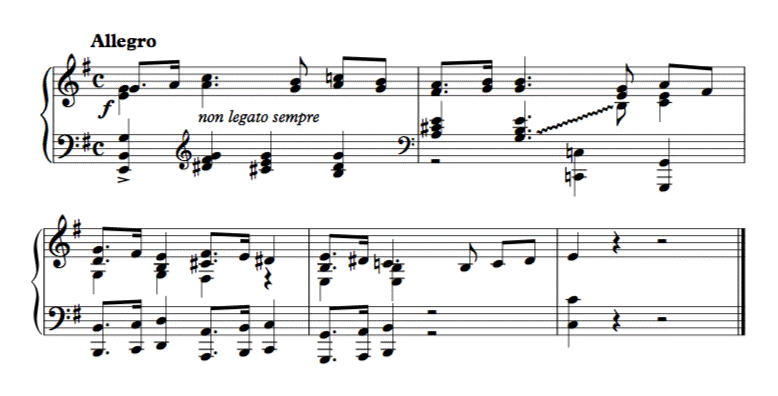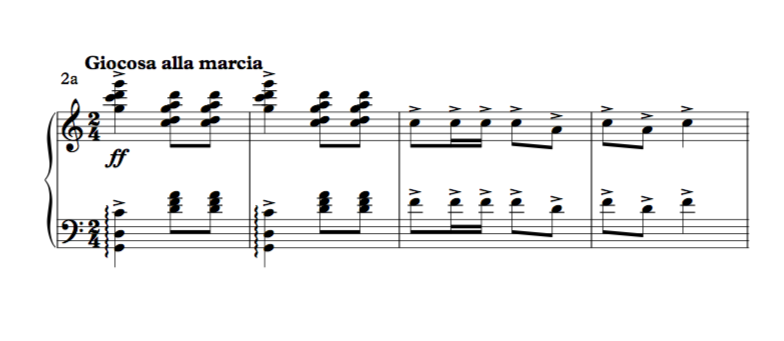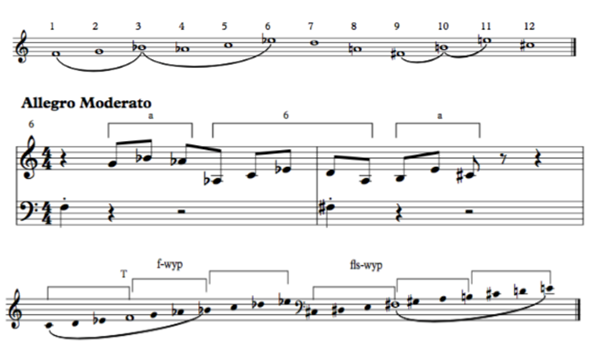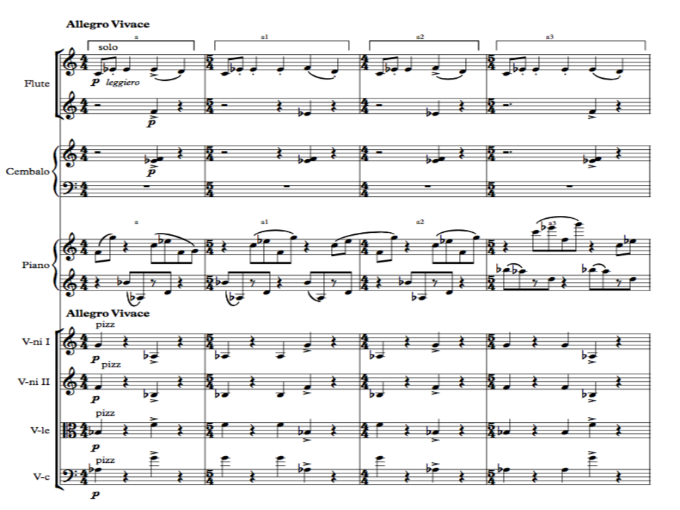-
Paper Information
- Paper Submission
-
Journal Information
- About This Journal
- Editorial Board
- Current Issue
- Archive
- Author Guidelines
- Contact Us
International Journal of Arts
p-ISSN: 2168-4995 e-ISSN: 2168-5002
2019; 9(1): 11-16
doi:10.5923/j.arts.20190901.02

From Mugham to Twelve Tone Technique: Music of Qara Qarayev
1Strings Art Major, State Conservatory, Cukurova University, Adana, Turkey
2Music Department, Faculty of Music and Performing Arts, Bilkent University, Ankara, Turkey
Correspondence to: Ceyla Ganioglu, Strings Art Major, State Conservatory, Cukurova University, Adana, Turkey.
| Email: |  |
Copyright © 2019 The Author(s). Published by Scientific & Academic Publishing.
This work is licensed under the Creative Commons Attribution International License (CC BY).
http://creativecommons.org/licenses/by/4.0/

The creativity of Qara Qarayev’s is determining for Azerbaijani musicians. His national roots, unique style, idiosyncratic techniques are studied and emphasized in this article. Qarayev is the first Azerbaijani composer who reveals other culture’s folklore which leave an indelible influences on Azerbaijani folk music. The music of Qara Qarayev’s traditional and international sides are both analyzed while the traditional and modern influences on Qarayev’s music are also examined.
Keywords: Dramatic, Qara Qarayev, Modern, Traditional music, Folklore, Cultural music, Modern music, Twelve tone technique, Azerbaijani folk music, Engraving
Cite this paper: Ceyla Ganioglu, Isın Metin, From Mugham to Twelve Tone Technique: Music of Qara Qarayev, International Journal of Arts, Vol. 9 No. 1, 2019, pp. 11-16. doi: 10.5923/j.arts.20190901.02.
Article Outline
1. Introduction
- The works of Qara Qarayev, who is a great representative of musical culture of Azerbaijan, represents the brightest phenomenon of the modern musical culture of this country. Some of Qarayev’s significant works are considered to be his symphonic poem “Leyli and Madjnoun”, “The Symphonic Sketches on Don Quixote”, the ballet “Seven Beau-ties” and “Path of Thunder’’. In addition to his works in chamber music forms, Qarayev has also composed musical pieces for theatre and cinema (Ali-zade F., 1997). While his works are influenced by some of the world’s renown class-sic literature and by the masterpieces of modern Soviet writers and poets, the music of Qarayev usually displays temperament, deep intelligence, sharp and expressive drama, fragile and sublimely sophisticated lyric and national identity. Therefore, Qarayev’s musical career and his identity as a musician also offers an artistic landscape of his era, and his approach to musical culture of Azerbaijan. As an artist, Qarayev had produced numerous significant works, which indeed synthesize classical literature and an individualistic essence. This statement, however, could not encompass the artistic motives in Qarayev’s music as his works were also embedded with the fundamental characteristics of cultural elements and a spark of individual genius, which reflected Qarayev’s artistic identity. This identity, of course, offered a sublime, yet characteristically well-defined style and tone his musical works. Qarayev, then, must be perceived as a source of a novel artistic movement, which illuminates other artists and guide them towards an unpreceded approach to music and musicality in modern societies. His works do not only underscore an conscious attempt to produce aesthetically worthy piece of musical work with respect to reincarnation of classical motives in modern history, but also as an individual reflection of the artist. This reflection both illuminates the artistic identity of Qarayev, as well as the social and cultural environment, which prompted him to compose musical works in modern literature and to present a synthesis of modern, Westernized dynamics of modern music literature with the salt reality of the artist’s culture, national and individual identity. In Qarayev’s experience, “it can be stated that; there is a direct proportion between the value of artistic personality and active invasion by reality of the artist” (Shefiyeva, 2009). This reality is the fundamental basis of Qarayev’s bridging musical works, which stands as an exemplary point for other artists with respect to connection between cultural and national musical heritage of Azerbaijan and modern music. Through the subtle, yet intriguing musical genius of Qarayev, these two seemingly distant spheres of artistic, and musical, production is linked with each other, as a novel approach to modern musical culture, which could illuminate both Azerbaijani and Turkic composers and musicians, as well as others who would attempt to reiterate modern musical culture through their own unique identity and folklore.
2. General Information on Qara Qarayev and His Composition Style
- Uzeyir Hajibeyov was one of the most influential figure who played a very important role in the development of Qarayev’s creative soul. Hajibeyov overcame the differences and gaps between folkloric scales and major-minor system, between dynamism of classical music and sluggish emotional modulations of a Mugham within the context of the timber and texture of the symphonic orchestra. It has a symbolical meaning that Qarayev’s “Song of the Heart” was used in Hajibeyov’s signature work “Köroğlu”. In that sense, according to Hajibeyov, young composers should not master only the new genres but also the new style techniques and the new language (Mahmudova, 2003). Qarayev’s high professionalism and industriousness displays a natural pedagogical talent that thrived when he started working as an educator. The Qarayev “ecole” is represented by generations of composers such as Rauf Hajiyev, Arif Melikov, Hayyam Mirzazade, Vasif Adigozalov, Firanghiz Ali-Zadeh, Uzeyir Hajibeyov. In the second half of the forties Qarayev’s first works appeared as synthesis of national and European instrumental music. Amongst these are the “Second Symphony”, the “String Quartet” 1946, and the symphonic poem “Leyli and Madjnoun” 1948 (Abbasova Elmira, 2000). Works of Qarayev are diverse in terms of complexity and dramatic art. Examples of this are the cycles of vocal miniatures on poems by Omar Khayyam, the “Nocturne’’ and “24 Preludes for piano” (Abbasova Elmira, 2000). The natural fusion of cantilenas are noticeable in the composers developmental melody structures. The theme of the poem “Leyli and Madjnoun” is the brightest example. It is obvious that Qarayev often uses important tools of internal germination and movement of the imagery as an element of imitative polyphony (Abbasova Elmira, 2000).In some cases the multilayered texture in Qarayev’s music is connected to his technique of “hidden” polyphony. The Piano prelude “cis-moll” is an illustration of this polyphony. However, the most typical of mark of Q. Qarayev is polymelodic tendencies. Moreover, Qarayev has pages, where multiple-tone combinations owe the deliberate cruelty and rusticate gain portrait such as characteristic quality “The Dance of The Jesters” from “Seven Beauties” (Abezgauz I.V., 1963).Significantly it can be affirmed that, even when he used serial technique, he was able to hold his own creativity within the boundaries of resolute Azerbaijani traditions. So, the composer never broke his own national turf (Abezgauz I.V., 2003).The topics and issues of Qarayev’s work, were always regarding those of big ideological significance. This is evidenced by the most controversial works fromhis early creative stages. The composer has a focused interest in the poetic heritage of Nizami and his sublime, ethical ideals and philosophy on the destiny of the people. Inferred from this may be an insight into Qarayev’s understanding of the genius romances of Cervantes and his interest in the works of Nazım Hikmet (Abbasova Elmira et all., 1956).Considerable number of works by Qarayev are composed in the most various figurative and emotional manners, for example; hymnal, solemnly conflicting, the tragic or the typical were all genres displaying the theme of the motherland (Abbasova, Elmira 2000).
2.1. The Second Symphony
- Qarayev spent his last year in Moscow, working on the Second Symphony that he completed in the spring of 1946 and is themed upon the Great Patriotic War. Second Symphony includes diversity of moods, joyfully festive, mournfully tragic and profoundly philosophical. Moreover, it has a distinctly expressed dramaturgy. It can be stated about the Second Symphony that it’s the decisive piece which was completed during the most difficult stage of composer’s life. In addition to the Second Symphony, the First Symphony was also a major milestone in the mastery of Qarayev’s artistic and composition skills. Further, it managed to clarify his unique style and to strengthen the ties with folk music (Abbasova Elmira et all.).
2.2. Leyli and Madjnoun
- “Autumn” and “Leyli and Madjnoun” are works by Qarayev which are different in many ways as a result of his interest in the oeuvre of Nizami Ganje’i, who was an outstanding philosopher humanist of the 12th century and is considered as a classic of Azerbaijani poetry. In ‘Leyli and Madjnoun’, three expressive images forms the basis of the music. The theme of the introduction is harsh and sharp. It is full of gloomy anxiety and imperative intonation as shown below;
 | Figure 1. The beginning the from the symphonic poem “Leyli and Madjnoun” |
 | Figure 2. A lyric part from the ballet Leyli and Madjnoun |
2.3. The Albanian Rhapsody
- Among many instrumental compositions of Qara Qarayev, one should spare a special place for the Albanian Rhapsody. The thematic material of “Albanian Rhapsody” was conceived from authentic Albanian melodies. Revealing the preference of Qara Qarayev to use folkloric elements. As mentioned, Qarayev was the first Azerbaijani composer, who showed a focused interest in musical folklore of other nations. So in this regard, “Albanian Rhapsody” is a good and valid example that supports this claim. The music of the rhapsody is perceived as a colorful narration about the destiny of the freedom-loving nation. The Albanian Rhapsody is a free three-part construction with an introduction.
2.4. Seven Beauties
- Qarayev composed the ballet “The Seven Beauties” as an homage to Nizami Ganje’i, a widely celebrated philosopher. One can perceive the initial ideas of the poet in “Seven Beauties”. As an important feature of the piece, an internal struggle is displayed through conflicting characters within the poem such as Aisha, the soldier Menzer and the artful despot Shah Bahram. For each of these characters, the composer creates vivid musical images. The music of “Seven Beauties” is correlated to composer’s national culture since the expressions of Azerbaijani folk dance is used in the work. Moreover, a fusion of dance and pantomime is one of the significant factors in “Seven Beauties” (Aliyeva, 1969).
2.5. The Path of Thunder
- The ballet named “The Path of Thunder” was composed in the second half of the 1950’s and is about a tragical love between a young man named Lennie and a woman named Sari. The theme of love is naturally weaved with two other dramatic subjects in the ballet. One of them is aspiration of African American people for freedom while the other one is the aspiration of two individuals for happiness in a conflict between the “colorful” and “dark”.The “Path of Thunder” is a modern musical - choreographical tragedy. There are stylistic techniques and multilayered identity of the active pulse in the work. Further, methods of development, harmonic language, and orchestral colors of ballet are modern and original. Qarayev boldly extends traditional and polyrhythmic styles in the ballet. Thus, Qarayev brings a broad stream of the basic thematic entities to dance (Abezgauz, I.V., 1967).By keeping its development specifically in the ballet direction, the music of “Path of Thunder’’ is raised to the level of a symphony. It’s filled with life, movements, and facial expressions of actors. However, its development subordinated not only to identify the stage but also lives out of the stage, in a form of two orchestral suites (Abezgauz, I.V., 2003).The dramaturgic relations exist between separate episodes. “Path of Thunder” as a complete musical - choreographical picture reveals not only flexible leitmotif development but also is close to the principles of dramaturgy of the Opera or the Symphony.Further, in ballet ‘’Path of Thunder’’, the gallant dances of antagonistic world are opposed to nationalistic symbols while it also displays lyric-psychological characteristic of positive images.
2.6. Don Quixote
- Qarayev, outlines the genre of his “Don Quixote” as engravings. One of the methods in this idea was making a variety of independent and contrasted musical images (Abasova et all., 1956). Everything in this music is precious, transparent and vibrant with the sound of discontinuity, patches of the light in calls of French horns and winds, chromatic glissandos of oboe and English horn (Abasova et all., 1956).
 | Figure 3. The overture to ballet “Don Quixote” |
 | Figure 4. The second engraving from ballet “Don Quixote” – “Sancho-Governor” |
 | Figure 5. The fourth engraving from ballet “Don Quixote” - “Aldonsa” |
 | Figure 6. The fifth engraving from ballet “Don Quixote” |
2.7. Symphony No: 3
- At the bottom of the score of Symphony No:3, lies elegantly the laconic title “thesis”. The structure of “thesis” defines not only the intervals but also the relatively complete melodic cells. This melodic structure determines the national heritage, the conjugation of minor second interval intonations characteristic of Ashug melody. Although the Ashug theme of the Scherzo demonstrates Qarayev’s amazing technique of variative development, it is surprisingly accurate. It represents figurative-intonational Ashug melodies.Moreover, the variations are based on consecutive, impressive timbre transformations of the ostinato subject that can be found in symphonic music of Qarayev. It also meets other characteristic manifestation of the variation principle of development. Literal repetitions of those sections of work occur infrequently. In most cases, he resorts to a re-orchestration of the repeating fragments. If not one, but several repetitions of some parts of forms are exposed with re-orchestration therefore a dispersed variation cycle acting as “a musical form of the secondary plane” (Abasova et all., 1956).A clear example of a variation plan displayed in the Symphony No:3 can be found below, in three-part form:
 | Figure 7. Ashug melody from the Symphony No.3 |
 The dispersed cycle of variations, here, results from quadruple carrying out of the first section stated every time with a different orchestration.
The dispersed cycle of variations, here, results from quadruple carrying out of the first section stated every time with a different orchestration. | Figure 8. Scherzo part of Symphony No.3 |
3. Conclusions
- Qarayev in every possible way expanded the creative palette at the expense of a courageous way. More interestingly, he was able to combine “traditional character” and creative independence more naturally. We can recognise the elements of Azerbaijani folk music in every composition of Qara Qarayev. The composer, nonetheless, with some minor exceptions does not quote authentic national themes. Therefore, Qarayev, as an artist could be placed in a liminal space, which is emphasized by the highly individualistic characteristics of musicality and musical culture, and is placed between Westernized modern musical culture and national musical culture heritage of Azerbaijan. This liminal space, however, must not be imagined as an isolated place, which is less fruitful than any of these musical culture environment, but must be perceived as an overlooking position, which enables the artist to combine elements of modern musical culture and national identity of Qarayev’s musical production.The art style of Qarayev finds balance in his works. As a result, the national origins became deeper and sturdier, and the traditions of musical modernity became epitomised while it getting broader and deeper. The influence of neo-classicism, which can be observed from compositions of his early years, can be clearly felt. Such were the characteristics of neo-classicism in the symphony No: 1, with its linear writing, and the referencing of J.S. Bach’s in the symphony No: 2. These symphonies are clear indicators of Qarayev’s novel approach to musical production and musical identity. They are clear examples of the synthesis of modern musical dynamics, which reiterates classical elements, and cultural identity, which connects the individual gift of Qarayev to his culture and nationality.The orchestral mastery is another mastery of the artistic style of the composer. The coloristic wealth is the main characteristics of Qarayev’s score. Qarayev is a first-class expert in terms of orchestral writing, who creatively refracted the richest traditions of world’s musical culture. Furthermore, the tradition of the Russian school of orchestration, and the effects of national originality are placed neatly in his art. So, the polyphonic texture in symphonic music of Qarayev, undoubtedly, is genetically connected with radical features of the Azerbaijani folklore. Therefore, it can nevertheless be suggested that Qarayev’s musicality is subtly based on a cultural understanding of music and musicality. These folklore elements and strong nationalistic and cultural features in his orchestral works indicate that Qarayev, as a composer, who produces modern pieces of music, succeeded in his attempt to embed this individualistic reflections on his cultural and national background to his modern works. The bridge between modern understanding of music culture and cultural heritage is constructed through Qarayev’s gifted works and his unique approach to music. Without a doubt, these orchestral works are the marking stone of Qarayev’s genius, not only within the context of cultural musical background and production, but also within the context of modern musical literature.To sum up, throughout the years, it becomes evident that the personality, the creativity of Qara Qarayev is a "guiding star" that determined and continues to determine the present and future of the Azerbaijani composers' creativity. Qarayev represents the image of the composer and innovator who is not only in the musical art of Azerbaijan and the Turkic people, but is also a wider influence on the contemporary musical culture of modernity. Because his works and his musical talent had been influential, within the context of the musical synthesis of different polars; Western-originated modern approach and cultural and individualist reflection on musicality, Qarayev stands as a pioneer, for both his culturally and nationally fellow composers and other composers of the modern musical composers.
 Abstract
Abstract Reference
Reference Full-Text PDF
Full-Text PDF Full-text HTML
Full-text HTML